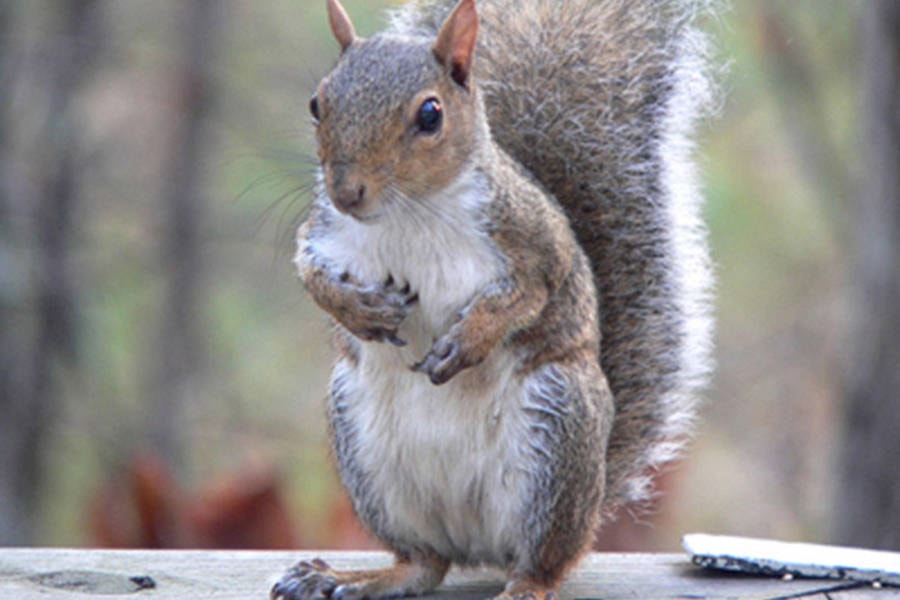There’s a new invader in the North Okanagan.
As of Monday, two eastern grey squirrels have been found in the Vernon area in two days.
“They are a nasty animal,” said Pete Wise, a local wildlife expert.
Grey squirrels are indigenous to central and eastern North America and nine were introduced to Vancouver’s Stanley Park in 1909. Since then, they have spread across the Lower Mainland, Vancouver Island and into the Interior.
Wise says these two grey squirrels are the first ones he’s aware of in the Vernon area.
According to the Invasive Species Council of B.C., the eastern grey squirrel has depleted populations of native squirrels through out-competition and disease, and displaces native birds of their nesting habitat, eating the birds’ eggs and nestlings. It also competes with native mice and voles.
“Economically, Eastern grey squirrels cost homeowners repairs due to digging up of lawns and gardens, chewing through electrical wires, eaves and shingles, and nesting in roofs, attics, and chimneys. Fruit and nut trees and vines may not produce as well due to the bark chewed away from these critters,” states the ISCBC.
According to Wise, there are very few options for the grey squirrel once trapped.
“They cannot be relocated or moved. They can’t live in the bush, they are an urban squirrel,” he said.
“We won’t relocate them, they’re done. They are a nasty animal.”
Under the B.C. Wildlife Act, homeowners are permitted to live trap and humanely euthanize or shoot the eastern grey squirrel. While acknowleding the risk invasive species pose, the B.C. SPCA is calling for restraint.
“The portrayal of the grey squirrel as a nasty animal will embolden some members of the public to use inhumane methods to trap or kill the animals. For example, drowning squirrels would be an offense under provincial animal cruelty legislation,” said Sara Dubois, the SPCA’s chief scientific officer
Eastern grey squirrels have dark to pale grey backs that may be brushed with cinnamon on hips, feet, and head. Ears are buff to grey to white, and its tail is white to pale grey.
To prevent grey squirrels, remove all food sources, including bird seed. Keep all compost, garbage and pet food covered
Sightings of grey squirrels can be reported to the Invasive Species Council of B.C. at 1-888-WEEDSBC or www.bcinvasives.ca for contact information.
